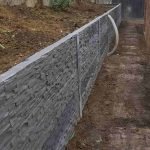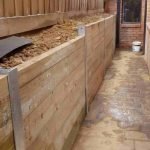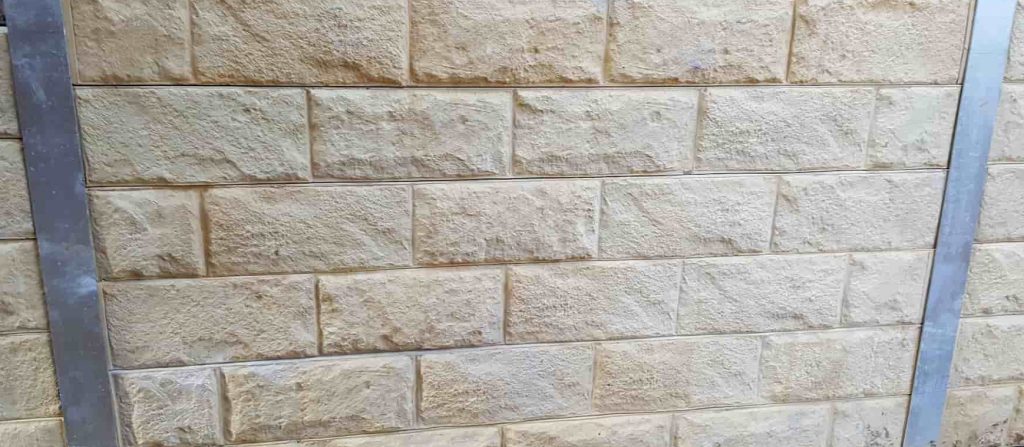Introduction
Building a keeping wall isn't almost stacking stones or putting concrete; it's a complicated procedure steeped in science and engineering. Retaining walls are important structures that hold back soil, preventing erosion and permitting the production of functional land on slopes. Whether you're aiming to install a garden function, develop more area for landscaping, or avoid soil movement in areas susceptible to shifts, understanding the complexities behind strong and resilient keeping walls is necessary. This post will delve into different aspects of maintaining walls, offering insights from expert contractors who specialize in this field.
The Science Behind Strong and Long Lasting Retaining Walls by Specialist Contractors
When we discuss the science behind keeping walls, we're diving deep into products, design principles, and structural stability. Retaining walls can be made from different materials such as concrete sleepers, lumber sleepers, stone, and even H beams. Each product uses distinct benefits and obstacles that require to be understood for optimal performance.
Understanding Soil Mechanics
Soil mechanics is the foundation of any maintaining wall construction. The wall must endure the lateral pressure applied by the soil it holds back. This pressure varies based upon several aspects:

- Soil type: Clay, sand, silt-- all these types act in a different way under stress. Moisture content: Water increases soil weight and can cause instability. Height of the wall: Taller walls need more robust support mechanisms.
The Function of Drainage in Keeping Walls
One crucial element often neglected is drain. Water accumulation behind a wall can result in increased pressure that might compromise its integrity.
Weep holes: These permit water to escape. Drainage pipes: Set up at the base to channel water away. Gravel backfill: Promotes drainage while supplying stability.Types of Keeping Walls
Understanding different kinds of retaining walls is important for picking the ideal one for your project.
Gravity Walls
Gravity walls depend on their own weight to withstand soil pressure. They are typically made from heavy products like stone or concrete.
Pros & Cons
- Pros: Simple design; no unique foundation needed. Cons: Limited height; requires considerable space at the base.
Cantilevered Walls
These walls use utilize to keep back soil, featuring a horizontal slab that extends into the maintained soil.
Pros & Cons
- Pros: More efficient than gravity walls for taller heights; less product needed. Cons: Requires mindful engineering and style calculations.
Sheet Stack Walls
Often utilized in soft soils where other types might stop working, sheet stack walls consist of interlocking slabs driven into the ground.
Pros & Cons
- Pros: Reliable in tight spaces; minimal footprint. Cons: Less stable under high loads; can be expensive.
Choosing Products for Retaining Walls
The option of materials significantly affects a wall's resilience and effectiveness.

Concrete Sleepers vs Lumber Sleepers
Concrete sleepers are preferred for their strength and longevity compared to wood sleepers which are more aesthetically pleasing but might have a shorter life expectancy due to rot or insect damage.
Comparison Table
|Material|Toughness|Expense|Aesthetic Appeal|Maintenance|| -------------------|------------|----------|-------------------|--------------|| Concrete Sleepers|High|Medium|Low|Low|| Wood Sleepers|Medium|Low|High|High|
Stone as a Product Choice
Stone is another timeless alternative known for its sturdiness however features higher expenses associated with labor-intensive installation processes.
Design Factors to consider by Expert Contractors
Expert professionals understand that style plays an important function in making sure that retaining walls function effectively with time.
Height Restrictions
Local building codes typically enforce limitations on how high a keeping wall can be built without requiring extra engineering certification.
Bending Moments and Shear Forces
Contractors compute bending moments (the propensity of an object to flex) and shear forces (the force acting parallel to an object) http://keeganfence-installerxkdw519.iamarrows.com/essential-concerns-to-ask-your-retaining-wall-contractor-in-melbourne when designing retaining walls.

Installation Process Overview
The setup procedure needs meticulous preparation and execution:
Site assessment Design finalization Material selection Excavation Foundation preparation Wall assemblyCommon Setup Mistakes
It's simple to make mistakes throughout installation-- here are some typical ones:
- Not accounting for drainage Skipping correct compaction of backfill Insufficient reinforcement
FAQ Section
What Are Retaining Wall Installers?
Retaining wall installers are specialized contractors who focus exclusively on building these structures with proficiency in various materials like concrete sleepers or lumber sleepers.
How Long Do Maintaining Walls Last?
With appropriate installation and maintenance, many keeping walls can last anywhere from 20 to 100 years depending upon products used.
Can I Construct My Own Maintaining Wall?
While do it yourself tasks can be fulfilling, it's a good idea to consult with an expert specialist if you're unskilled with structural work; improper setup can lead to expensive failures down the line.
What Is Backfill?
Backfill describes the material utilized to fill in behind a maintaining wall after building and construction; it usually consists of gravel or crushed stone for optimal drainage.
How Much Does It Cost To Construct A Maintaining Wall?
Costs differ widely based upon size, product choice (like concrete versus wood sleeper), labor rates, and place but typically range from $15-$50 per square foot installed.
Are There Allows Required For Structure A Maintaining Wall?
Yes! A lot of municipalities require licenses before building any considerable structure like a retaining wall due to safety policies-- constantly check regional laws first!
Conclusion
Building strong and durable maintaining walls includes much more than just stacking products together-- it's an intricate blend of science, engineering principles, product choice, style considerations, ecological factors like moisture levels or soil types being taken into consideration every action along the method! Whether you choose concrete sleepers due to their toughness or choose rustic appeal with timber sleepers-- partnering up with knowledgeable professionals guarantees success through comprehensive planning integrated with market understanding customized specifically towards your requirements! The science behind strong and resilient retaining walls by professional contractors will not just protect your residential or commercial property however also boost its aesthetic appeal while standing high against time itself!